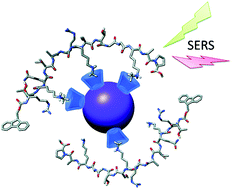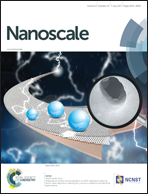Probing lysine mono-methylation in histone H3 tail peptides with an abiotic receptor coupled to a non-plasmonic resonator†
Abstract
Binder and effector molecules that allow studying and manipulating epigenetic processes are of biological relevance and pose severe technical challenges. We report the first example of a synthetic receptor able to recognize mono-methylated lysines in a histone H3 tail peptide, which has relevant functions in epigenetic regulation. Recognition is robust and specific regardless of the position and the number of mono-methylated lysines along the polypeptide chain. The peptide is first captured in solution by a tetraphosphonate cavitand (Tiiii) that selectively binds its Lys-NMe+ moieties. Separation from solution and detection of the peptide-Tiiii complexes is then enabled in one single step by an all dielectric SiO2–TiO2 core–shell resonator (T-rex), which captures the complex and operates fully reproducible signal transduction by non-plasmonic surface enhanced Raman scattering (SERS) without degrading the complex. The realized abiotic probe is able to distinguish multiple mono-methylated peptides from the single mono-methylated ones.



 Please wait while we load your content...
Please wait while we load your content...